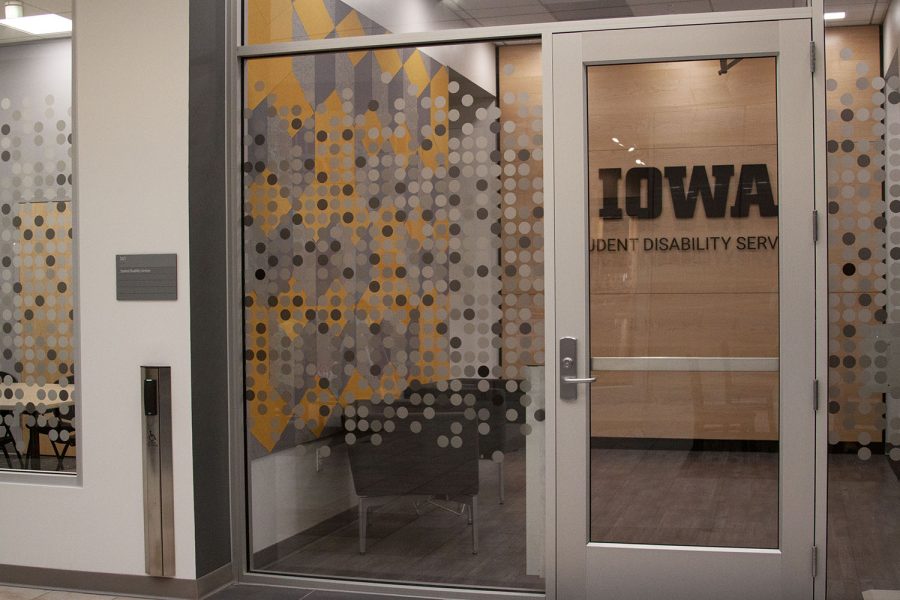Opinion | The University of Iowa should be striving towards more universal design
Basic things like image descriptions, captioning, and accessible fonts should be standard for University of Iowa media.
The outside of the Student Disability Center in the Old Capitol Mall is seen in Iowa City on Tuesday, March 1, 2022.
March 28, 2022
It is deaf history month, and from social media platforms to pre-recorded lectures, more needs to be done to make sure the University of Iowa is accessible to all populations. The more I have learned about accessibility and universal design from having done diversity, equity, and inclusion work with Dance Marathon the more my eyes are open to how we are lacking when it comes to creating accessible environments.
I went to “educationals” and held a listening session that covered what universal design is, what accommodations can be made, and how these things can be implemented to better serve everyone.
Universal design refers to creating spaces that are accessible to all without any need for accommodations. Where possible, the university should be striving for universal design. However, I can see this lacking in my own classes.
In my classes, none of my pre-recorded lectures posted on ICON are captioned, and there is no way to turn on auto-captions. While on Instagram, I noticed only a handful of university accounts used photo image descriptions.
Photo image descriptions are used under image captions to describe what is in the photo. People who are visually impaired or blind can use screen reading programs to know what is in the photo. Both of these things are relatively simple ways to ensure there is some basis of accessibility.
As of right now, students with disabilities who need accommodations must go through student disabilities services. For deaf and hard-of-hearing populations, there is an application and intake process. From there, you can share your accommodations with your professors, and communication between the students, professor, and disabilities services continues.
Once these accommodations are set there are also sign language interpreters, captioning services, as well as accessible media requirements for professors.
While it is necessary to establish these needs and provide services, students with disabilities should not have to jump through hoops to seek an education when it comes to things like captioning pre-recorded lectures or using photo identifiers on social media.
Using accessible fonts like arial or calibri, accessible colors, photo identifiers, and captioning should all be a standard for the university. All staff should be trained on how to caption or, at minimum, have auto-generated captions on lectures. There should also be training on what fonts are accessible for visually impaired individuals and what colors are accessible for people affected by color blindness.
To create an effective learning and living environment that keeps students at Iowa, these issues need to be addressed. According to the American Institute for Research, poor accessibility leads to poor retention rates. They found that 46 percent of students with disabilities left high school to go on to college and of that group just 40 percent graduated.
From 2020 to 2021, there was a slight net increase of five faculty and staff at Iowa who self-reported as having a disability. Although there is no data specific to Iowa, the most recent numbers show 19.4 percent of students in college have a disability.
Although it may seem like a small number of students have disabilities, this number is likely smaller than the actual population size because of students who do not self-report.
As an able-bodied person who does not live with any disabilities, it is easy to settle in my privilege and gloss over the ways certain environments are inaccessible. However, we all need to confront our understanding of disability and access to advocate for more inclusive spaces.
Students with disabilities should not always have to ask for extra accommodations to get an education. Things like photo identification, captioning, clear ramps and elevators are all things faculty, staff, and students should have access to.
Columns reflect the opinions of the authors and are not necessarily those of the Editorial Board, The Daily Iowan, or other organizations in which the author may be involved.



